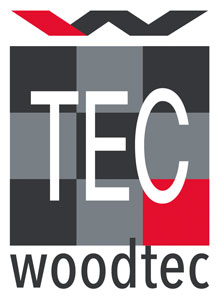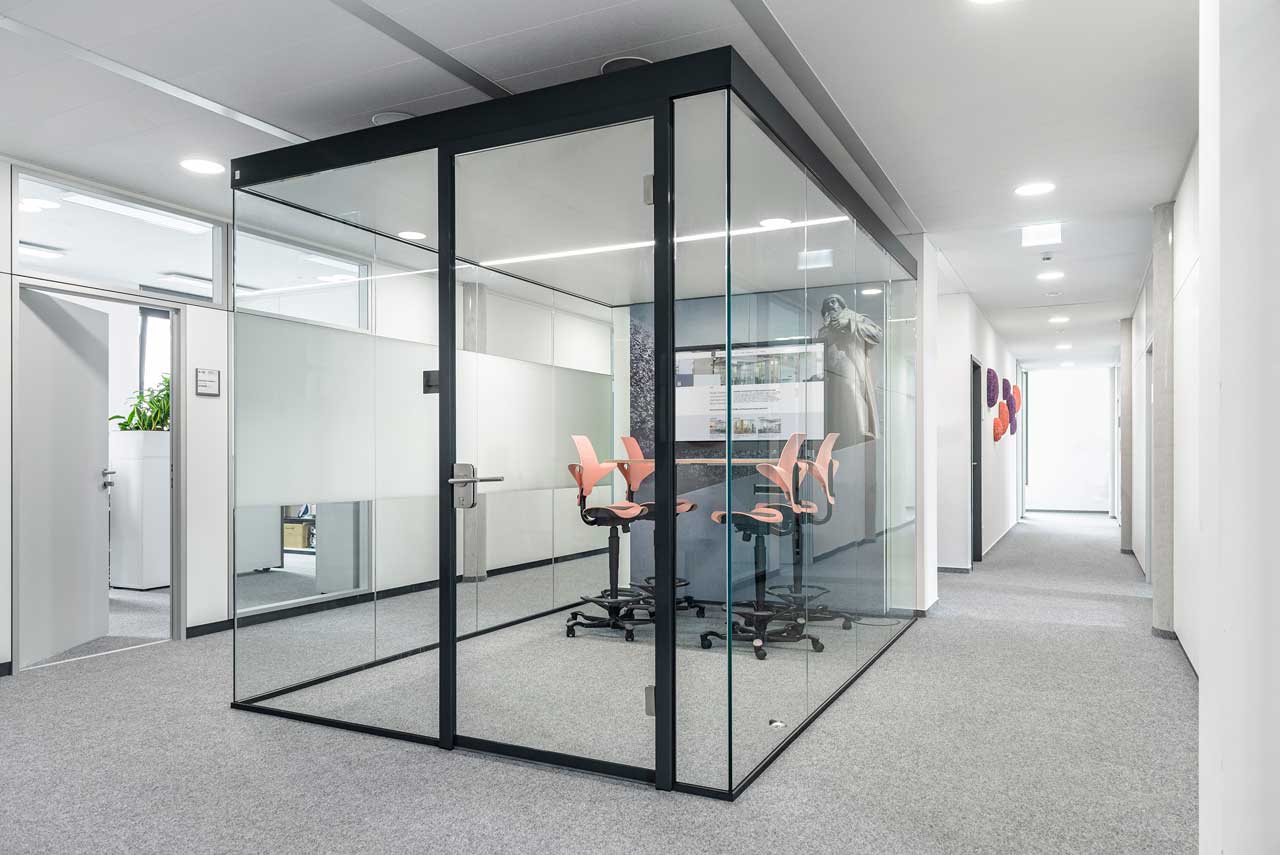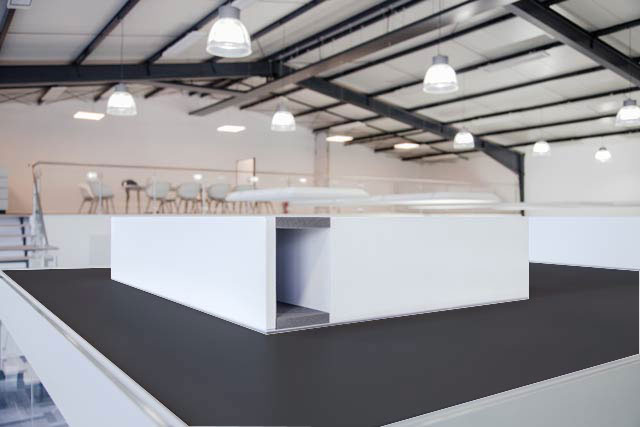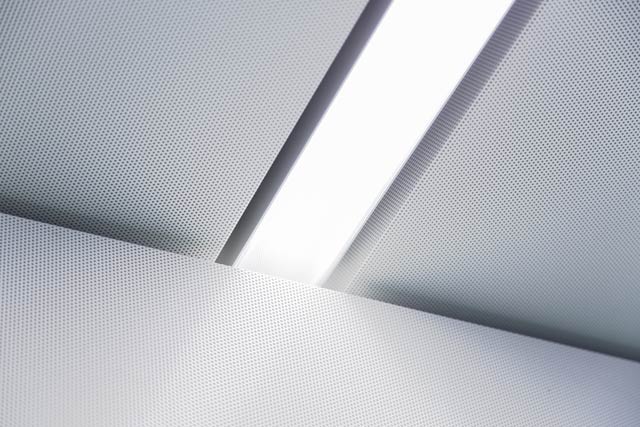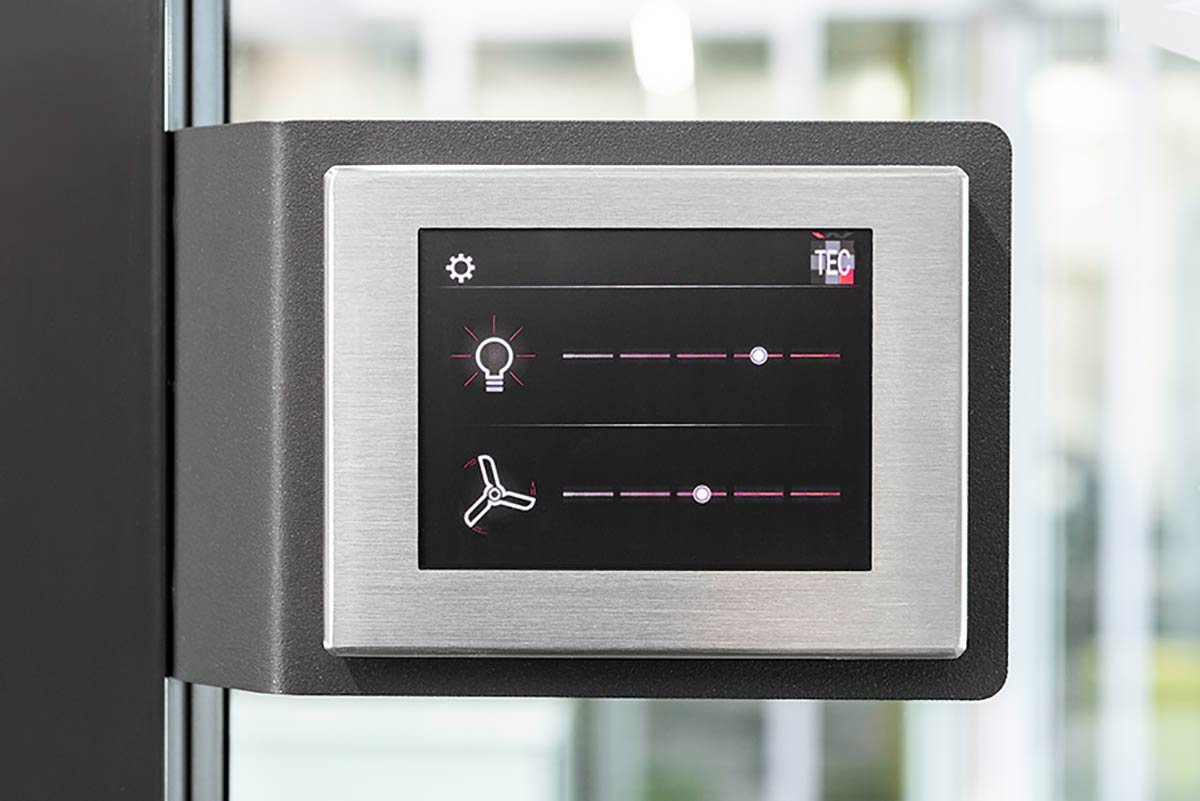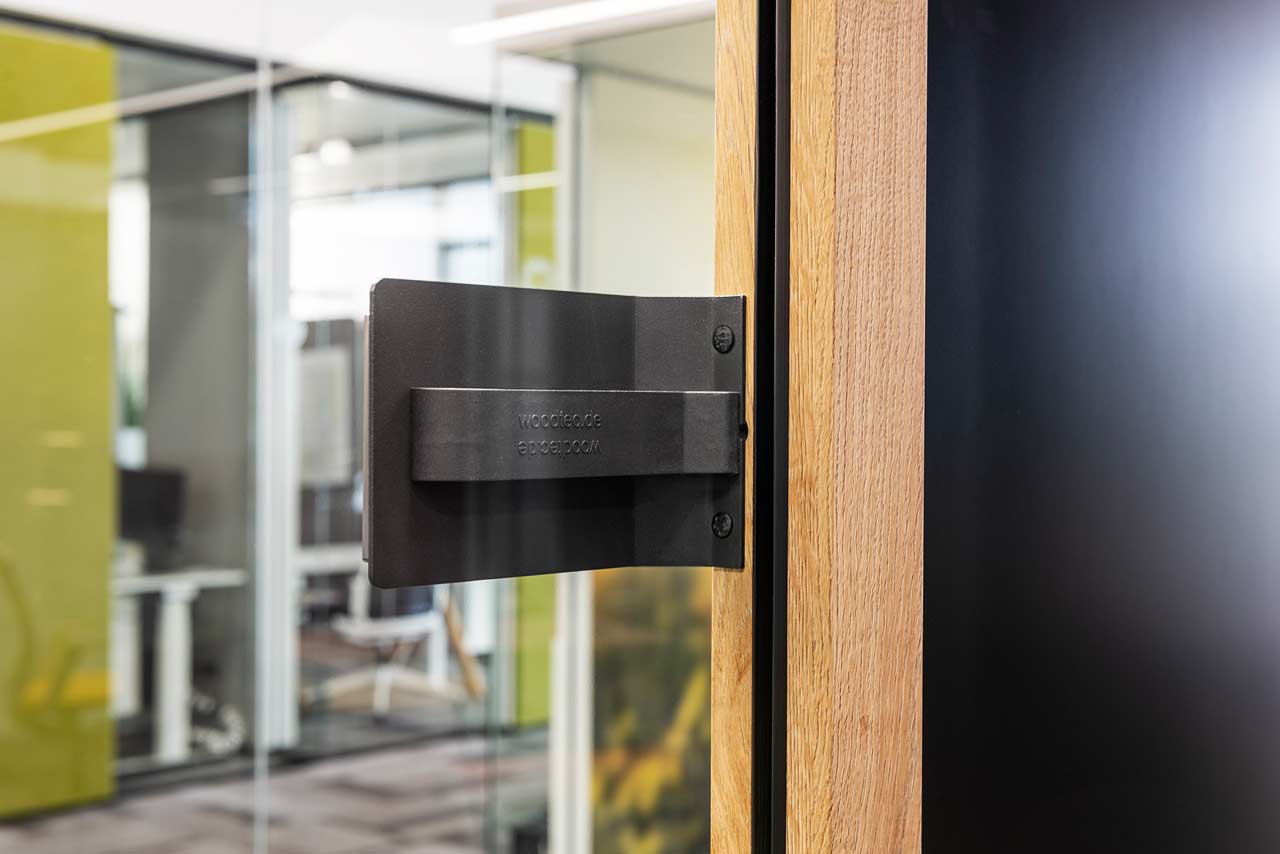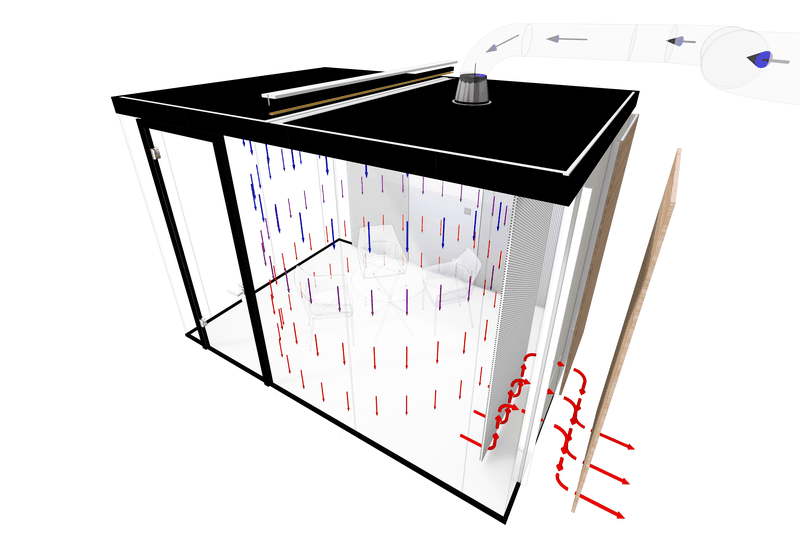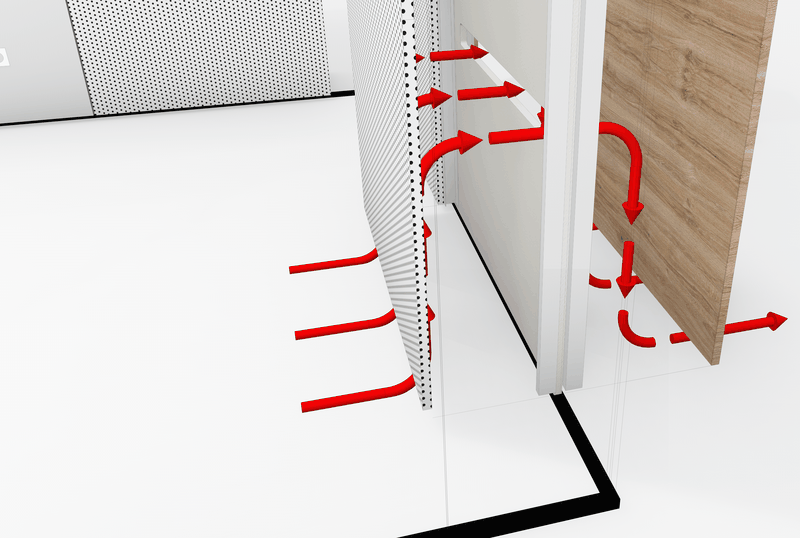
The vetroCUBE room-in-room system ventilates itself
Flexibility was the main requirement for the development of the room-in-room system. The rooms should be independent of the building structure and be used wherever they are needed, even away from the façade, even without on-site ventilation systems. The think tank must function independently. The prerequisite for this independence is a powerful, quiet and system-integrated ventilation system.
room-in-room without connection to the building ventilation system
The vetroCUBE room-in-room system does NOT need to be connected to the building's ventilation system. The integrated ventilation system delivers a volume flow of at least 60 m³/h per person. The ventilation system is very quiet. In normal operation - and here the fan box already generates a volume flow of over 350 m³/h, so can easily supply 6 people - the noise level is below 30 dB(A). The ventilation principle works in harmony with the natural thermal system and thus ensures thorough ventilation of all zones of the room-in-room unit. The volume flow is adjusted at the factory to the size of the room and to the number of people who are to use the room-in-room system at the same time. The user can control the ventilation within reasonable limits.
Ventilation, self-sufficient, efficient and quiet
- System-specific ventilation
- Ventilation very quiet below 30 db(A)
- Volume flow min. 60m³/h and person
- Components maintenance-free
- Ventilation automated by presence detectors
- Ventilation can be individually controlled via the control panel
- After the usage phase, switch back to the default setting
- thermally optimized flow
- laminar air velocities
- no drafts
- Warmer exhaust air via the system ceiling
- cooler supply air via the base area of solid walls
- Connection to on-site ventilation system upon request
The room-in-room system with integrated ventilation is thermally optimized
An acoustically optimized fan box sits on the ceiling. The exhaust air is led to the outside via two shadow gaps, to the right and left of the LED light channel integrated flush into the ceiling. The fan box collects heated and used air. The supply air is secured via the solid wall elements of the room-in-room system. Airflow openings close to the floor allow fresh air to flow in from cooler air layers. This results in optimal thermal ventilation of the room. On the one hand, the entire system is acoustically decoupled, so that sound insulation of 37 dB is guaranteed. On the other hand, the fan box is very quiet and emits less than 30 dB(A).
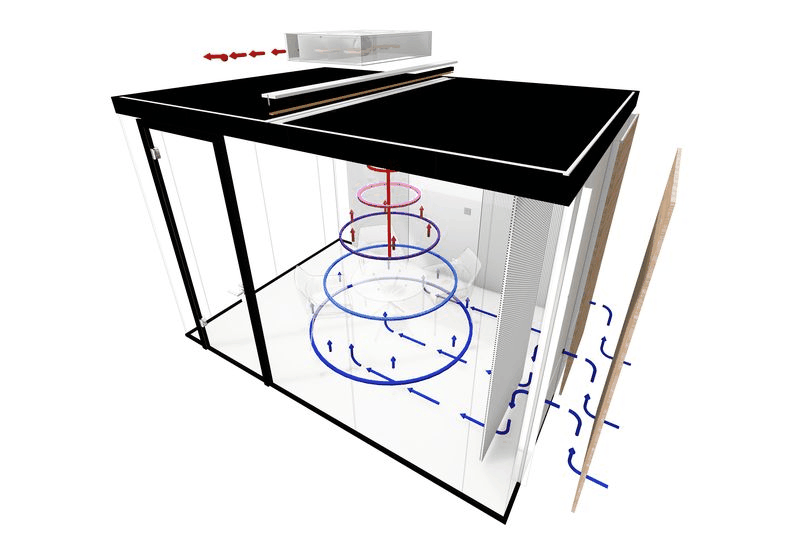
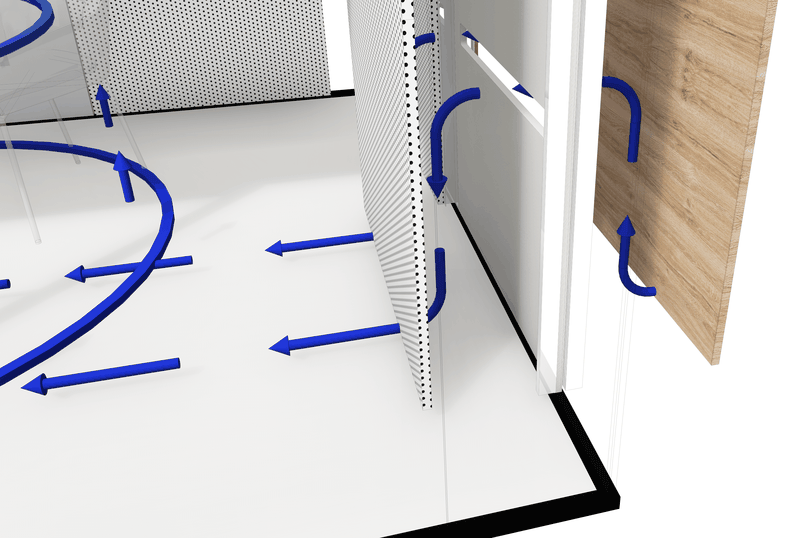
Fan box and air passages in the ceiling element are acoustically optimized and maintenance-free
It is ensured that on the one hand the ventilation works silently and on the other hand the good sound insulation of the room-in-room system is maintained. The ventilation system is maintenance-free. There are no air filters or other components to be replaced or maintained. After all, the air has the same quality as that which our colleagues breathe in the open space, so filters, for example, are obsolete and would unnecessarily increase the air resistance.
Control of the ventilation system
The ventilation control is automated. A presence detector is integrated into the system ceiling. It switches on the ventilation (including the light) when entering the room-in-room unit. The ventilation then delivers at least 60 m³/h per person. The user can now adjust the ventilation individually. For example, the ventilation can be temporarily regulated to double the volume flow (air shower). The ventilation returns to the preset standard output within a time window of 5 minutes in order to run as quietly as possible. At the end of the usage phase, after leaving the room, the ventilation (including the light) switches off with a follow-up time of approx. 10 minutes.
All parameters can be changed individually using a stored PIN function. A stand-by operation can be set up, for example. For example, the ventilation is reduced to a low volume flow after use (approx. 50 m³/h), but continues to run in order to "keep the room fresh". At night, between 10 p.m. and 6 a.m., the ventilation switches off completely.
OPTION Connection to the on-site ventilation
If the building can offer on-site ventilation at the planned parking spaces, it is also possible to connect the room-in-room system to the building's own ventilation system. Supply air pipes can be connected via appropriate cutouts in the system ceiling. The exhaust air can be passively diverted via the previously described overflow openings in the solid walls. If the size of the room-in-room unit allows this (distance between supply and exhaust air openings), both connections can be made via the ceiling. This variant makes particular sense if there is a need to supply the room with fresh, filtered and possibly cooled air.
